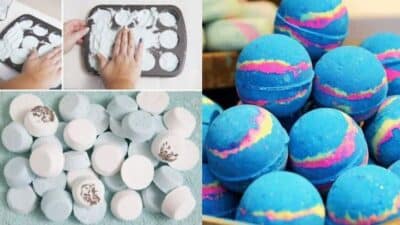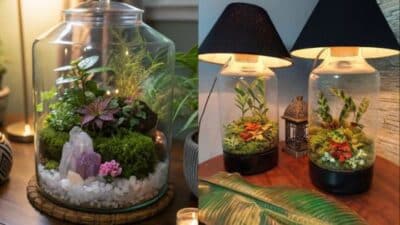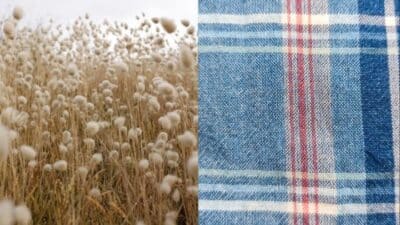Do you have a pile of fabric scraps but aren’t sure what to do with them? You can turn leftover fabric into unique wall art that adds color, texture, and personality to your home decor. This simple DIY project is flexible, affordable, and a great way to reduce waste while creating something beautiful.
With just a few basic supplies like a blank canvas, glue, and your favorite fabric pieces, you’ll discover endless design possibilities—think geometric patterns, patchwork collages, or abstract shapes. Mixing in other materials like ribbons or beads can enhance your piece even more and make your craft totally one-of-a-kind.


Key Takeaways
- Learn how to make wall art using fabric scraps.
- Get ideas for creative designs using simple supplies.
- Find inspiration to use leftover fabric in new home decor projects.
Choosing the Right Materials
Picking the best materials at the start makes your fabric wall art project smoother and helps ensure a polished result. Consider the textures, colors, and structure of each component for maximum impact and lasting quality.
Selecting Fabric Scraps
The best fabric scraps bring both variety and harmony to your artwork. Look for pieces of quilting cotton, linen, canvas, or any sturdy scrap fabric that won’t easily fray or stretch. Small bits from prior sewing projects or leftovers from upholstery work are perfect.
Mixing patterns, colors, and textures can give your wall art depth, but aim for a cohesive palette. If you used particular fabrics in your home décor (like upholstery or pillows), repurposing leftover scraps in your wall art helps coordinate your space.
For added visual interest, include ribbon, lace, or felt. Scraps should be clean and pressed—wrinkles or stains will show. Fold and organize them by color or size in advance to speed up the creative process.


Frames and Backing Options
Select a frame and backing that suit your project’s style and size. Standard picture frames, embroidery hoops, or even empty window frames can work. If you prefer a modern look, simple canvas panels or stretched canvases are great as a base.
For the backing, consider batting or felt for a soft, quilted effect, or use cardboard or craft foam for a more rigid finish. Wooden canvases or poster board also provide structure. Make sure the backing fits securely within the frame so your design stays put.
If your art is heavy or layered, a deep shadow box frame is helpful. For lighter designs, basic frames are fine. Vintage or secondhand frames can give character to your project without extra cost.
Essential Tools and Supplies
Gather scissors (fabric and paper), a ruler, and pins for accurate cutting and placement. You’ll need adhesives, like Mod Podge for decoupage effects or hot glue (using a hot glue gun) for attaching bulkier elements.
A small brush or foam applicator is useful for spreading glue evenly. Consider fabric glue or tacky glue for delicate or intricate pieces. If sewing is part of your design, keep a needle, thread, and thimble close by.
Have an iron handy to smooth out any wrinkles before assembling. Lay out your supplies in advance to streamline your work and minimize interruptions. Organized materials speed up the crafting process and make it more enjoyable.


Design Ideas for Fabric Wall Art
You can transform leftover fabric into eye-catching art for your home. There are many creative ways to combine quilting techniques, playful strips, textured flowers, or bold shapes for unique and affordable wall decor.
Patchwork and Quilt-As-You-Go Designs
Patchwork is a classic choice for fabric wall art, especially if you have a mix of quilting cotton scraps. Sew small squares or rectangles together, either by hand or machine, to make colorful panels. You can arrange your fabric in a grid, or go for a more random, scrappy look.
Quilt-as-you-go is a helpful method for beginners. Instead of finishing the patchwork and then quilting, you attach pieces directly to a backing as you go. This keeps your project flat and stable, especially for wall decor.
Add extra interest by using contrasting stitching or mixing patterns, like florals and solids. Frame your finished patchwork or stretch it over a canvas for a polished appearance.
Fabric Strips and Stripes
Using strips of fabric is one of the simplest ways to create striking fabric wall art. Cut long strips from leftover material, then arrange them side by side or at angles for a striped effect. This method works well with both bold and neutral colors.
You could lay the strips horizontally, vertically, or even weave them together for extra texture. Overlap the edges for a seamless look or leave raw edges visible for a more rustic vibe. Try alternating widths for added movement in your piece.
Attach strips to a canvas or backing board with glue, tape, or simple stitching. This technique highlights the variety in your scrap bin and offers quick results for DIY home decor.
Creating Texture With Fabric Flowers
Fabric flowers add dimension and interest to wall art and are a great way to use small fabric scraps. Start by cutting petals from quilting cotton or other lightweight material. Layer the petals and secure them in the center with thread, glue, or decorative buttons.
Arrange flowers in clusters or patterns. You can fill an entire frame or scatter a few blooms around a canvas. Mixing fabric types and colors makes each flower unique.
Consider using felt for leaves or adding beads for extra detail. This approach brings softness and a touch of whimsy to your fabric wall art.
Abstract and Geometric Patterns
Abstract and geometric designs let you play with shape, color, and negative space. Cut simple shapes such as circles, triangles, or rectangles from your fabrics and arrange them into bold patterns.
Use a variety of colors to create contrast or choose a coordinated palette for a more subtle effect. Layer shapes, overlap edges, or create repeating motifs for visual interest.
Secure the pieces with iron-on adhesive or careful stitching. Abstract fabric wall art pairs well with modern home decor and gives you plenty of freedom to experiment with layout and style.


Step-by-Step DIY Instructions
Using scrap fabric and simple supplies like hot glue and Mod Podge, you can create custom wall art on a budget. Careful planning, attention to detail, and thoughtful finishing touches help your project look polished and personal.
Planning and Preparing Your Design
First, gather your materials. You’ll need a selection of scrap fabrics, a blank art canvas or frame, scissors, a hot glue gun with glue sticks, and Mod Podge for sealing. Choose fabric pieces that coordinate in color, texture, or pattern depending on your style.
Spread out your fabric scraps and experiment with different arrangements. Try laying out patterns or layering pieces to achieve a unique look. Mark the layout lightly with a pencil so placement is easy when gluing.
If you want sharper edges or a specific shape such as geometric patterns, use painter’s tape to mark boundaries on your canvas. Iron your fabric to remove creases. Pre-cutting the fabric shapes will help the application process go smoothly.
Attaching Fabric Using Hot Glue and Mod Podge
Heat up your hot glue gun and start with the largest fabric pieces. Apply a thin line of glue directly to the edges or corners of the fabric, then press it onto the canvas or backing. Work carefully to avoid wrinkles or air bubbles.
Layer smaller fabrics over the base layer the same way. If the fabric is thin or frays easily, you can brush a thin layer of Mod Podge on the back to stabilize it. Once all fabric is in place and the glue has cooled, brush a coat of Mod Podge over the entire surface to seal the fabric and give a uniform finish.
Let the Mod Podge dry according to the instructions on the label. This step helps protect the fabric from dust and makes the wall art more durable. For added texture, consider overlapping pieces or using decoupage techniques to secure intricate shapes.
Finishing Touches and Display Tips
Trim any excess fabric hanging over the canvas or backing with sharp scissors. If the corners are bulky, cut small notches in the fabric and fold them neatly with hot glue for a clean result. Double-check that all edges are fully secured to the surface.
Once finished and dry, consider framing your wall art for a more polished appearance. Use appropriate hanging hardware like D-rings or sawtooth hangers if using a canvas. Try arranging multiple small pieces together on the wall for a gallery effect.
To keep the fabric wall art looking fresh, dust gently using a dry cloth and avoid hanging in areas with high humidity. Personalize your display by adding embellishments like ribbon, beads, or simple painted details for extra flair.


Creative Scrap Fabric Projects for Wall Art
Scrap fabric can be transformed into practical and decorative art for your walls. By using simple materials and creative designs, you can make personalized pieces that add color and texture to any space.
Coasters and Mini Canvases
Create a set of coasters or mini canvases by wrapping small squares of wood or canvas with scrap fabric pieces. Use a staple gun or glue to secure the fabric tightly on the back. For added interest, mix different patterns and textures on each piece.
Arrange the finished coasters in a grid on the wall for a geometric art display. Mini canvases can be grouped in clusters or hung individually. This method allows you to highlight favorite prints or colors from your leftover material.
Here are some materials you will need:
- Scrap fabric (cotton, linen, or blends)
- Small wood squares or canvases
- Staple gun or strong glue
- Scissors
Use your finished coasters or canvases as both art and functional items when needed.
DIY Fabric Garland
A fabric garland made from scraps is easy to create and brightens any wall or window. Cut fabric into strips, about 1 inch wide and 6-8 inches long, using pinking shears for a frayed look or regular scissors for clean edges.
Tie each strip onto a length of twine, string, or ribbon, pushing the pieces together as you work for a fuller appearance. Alternate colors and patterns for a vibrant effect or use a single color scheme for a more coordinated look.
Hang your garland vertically for a curtain-like vibe or horizontally to accent a shelf or frame. Fabric garlands work well as festive decor and can be adjusted to fit any season or occasion.
Inspiration for Your Next Sewing Project
Fabric wall art offers a practical way to use up fabric scraps left over from previous sewing projects. With a little creativity, you can turn these pieces into wall decor that’s both colorful and meaningful for your space.
Mixing Fabrics for Unique Looks
Using a mix of fabrics adds texture and visual interest to any wall decor. Try combining cotton, linen, felt, and even denim for a layered, dimensional effect. Each fabric brings its own texture and weight, creating depth in your piece.
Don’t be afraid to include small scraps with patterns or embroidery—these can act as eye-catching accents. For a cohesive look, you might group fabrics in complementary textures or alternate between matte and shiny materials.
If you’re sewing your fabric wall art, play with different stitching techniques: straight lines, zig-zags, or decorative hand embroidery. Using visible seams or raw edges can also add character to your artwork. For a structured project, quilt or applique your fabric scraps onto a sturdy backing.
| Fabric Type | Texture | Suggestion |
|---|---|---|
| Cotton | Smooth, light | Background pieces |
| Denim | Durable, heavy | Borders or shapes |
| Felt | Soft, sturdy | Layered embellishments |
| Linen | Light, textured | Accent panels |
Color Coordination and Theme Ideas
Choosing colors thoughtfully makes your fabric wall art stand out. Pick a central color and build around it, using lighter and darker shades to create balance. If you want a calm look, stick with similar hues. For a bolder statement, use contrasting or vibrant scraps.
Themes can also guide your choices. Nature-inspired themes might use greens, blues, and earthy patterns. Geometric or abstract designs work well with solids and stripes. If you have leftover fabric from a previous sewing project, incorporate it directly—this ties your wall decor to other handmade items in the room.
Here are a few ideas to jumpstart your project:
- Monochrome: Different shades of one color for a unified look
- Patchwork: Mix unexpected prints or vintage scraps
- Seasonal: Warm reds and oranges for fall, cool blues for winter
Don’t hesitate to lay your fabric scraps out before sewing them together. This lets you adjust placements and see how colors and prints interact in your finished wall art.
- 35shares
- Facebook0
- Pinterest35
- Twitter0


